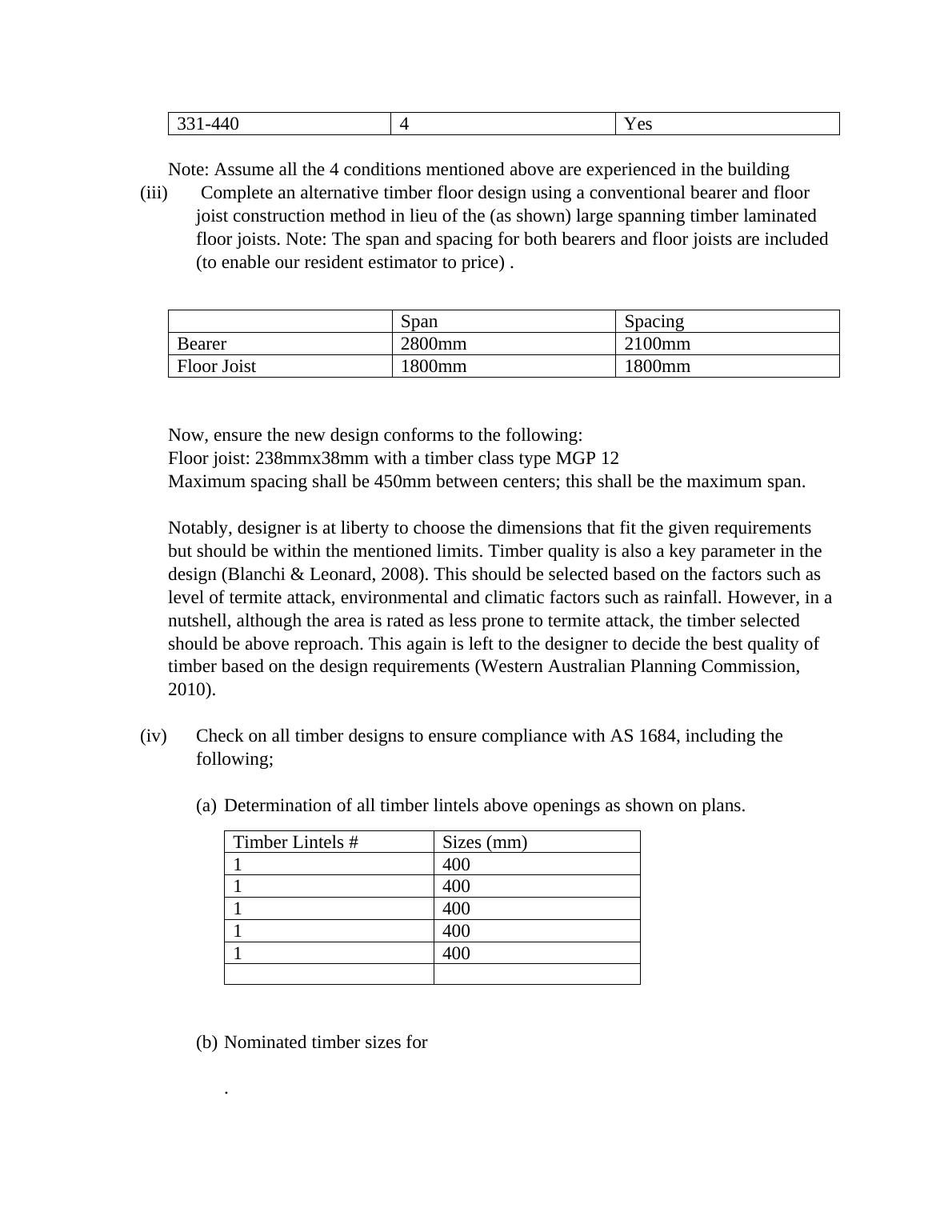Ask a question from expert
Australian Building Codes and Standards
8 Pages2442 Words150 Views
Added on 2019-10-30
Australian Building Codes and Standards
Added on 2019-10-30
BookmarkShareRelated Documents
ASSESSMENT REPORT FOR A SINGLE STOREY HOUSE DWELLINGAS PER THE AUSTRALIAN BUIDLING CODES AND STANDARDSINTRODUCTION The work presented hereinafter dwells on the critical assessment aspects of the residential building whose technical details have been provided to peruse and assess it against the set standards namely: Building Code of Australia part 2 (BCA, 1996). Notably, the report pursues various elements in the house against the given provisions to ascertain full compliance hence such terms as “deem-to-satisfy” will be used accordingly in this context. Besides, calculations will also be done and results presented in a manner that is understandable and in sync with the sectional provisions. Hence the let the assessment work begin. ASSESSMENT CRITERIA Building Elements and ServicesThis section presents the various assessment outcomes vis-à-vis the appropriate codes and standards. Hence the following are presented for further perusal: (i)A complete full design check against the National Construction Code, Building Code of Australia Volume 2 for all parts. The NCA provides the general provisions for legal requirements in the building sector. The BCA document is therefore a universal paraphernalia that envisages harmony in building construction designs and development while ensuring public safety and wellbeing are guaranteed in the developments. This part, therefore, provides a concrete assessment of the identified elements as per the building code of Australia (BCA). For this part, table 1 gives the summary of the actual assessment and the specific recommendations thereafter. It should be noted that full compliance includes the conditional status of the surrounding hence issues like soil condition and natural phenomena like earthquakes are included. (ii)A complete waffle pod slab design as shown on the attached plans detailing and confirming the slab thicknesses and reinforcement (top and bottom) using AS 2870.Firstly, need to check the wind classification for the area (as provided by local authorities); let it be fixed at N2 hence the following information can be retrieved (as per 1684: 2 (2010): Gust wind speed for: Permissible stress = 33m/sServiceability limit state=26m/sUltimate limit state Vu= 40m/s

Hence for the purpose of assessment, we shall use the maximum value for the design check, that is: 40m/sFor this windy condition and in order to guarantee safe design of the structure, the values of geometric parameters are checked against the maximum theoretical values hence: ParameterTheoretical Limit Max.Actual Remarks Height 3000mm2100Passed Width 16.8m13.8mPassed Roof pitch 350250Passed Bracing space 9000mm7600mmPassed Roof type Hip, gable, skillion, cathedral, trussed or pitched Trussed PassedNext, we must check the structural integrity: Forces on the building are determined based on the conditions below: Racking-wall deformsOverturning wall-due to rotationoTendency of sliding Connection failure due to uplift Hence the appropriate timber dimensions must be selected from the tables below for both upper and lower reinforcement: Slab thickness (for garage)- 85mmReinforcement bars: Number for the top portion: Stem width Top steel Remark110-1500151-2201221-3302Yes331-4403And for the bottom portion: Beam base width Bottom steel #Remark110-1501151-2202221-3303

331-4404YesNote: Assume all the 4 conditions mentioned above are experienced in the building (iii) Complete an alternative timber floor design using a conventional bearer and floor joist construction method in lieu of the (as shown) large spanning timber laminated floor joists. Note: The span and spacing for both bearers and floor joists are included (to enable our resident estimator to price) . Span Spacing Bearer 2800mm2100mm Floor Joist 1800mm1800mm Now, ensure the new design conforms to the following: Floor joist: 238mmx38mm with a timber class type MGP 12 Maximum spacing shall be 450mm between centers; this shall be the maximum span. Notably, designer is at liberty to choose the dimensions that fit the given requirements but should be within the mentioned limits. Timber quality is also a key parameter in the design (Blanchi & Leonard, 2008). This should be selected based on the factors such as level of termite attack, environmental and climatic factors such as rainfall. However, in a nutshell, although the area is rated as less prone to termite attack, the timber selected should be above reproach. This again is left to the designer to decide the best quality of timber based on the design requirements (Western Australian Planning Commission, 2010). (iv)Check on all timber designs to ensure compliance with AS 1684, including the following; (a)Determination of all timber lintels above openings as shown on plans. Timber Lintels #Sizes (mm)14001400140014001400(b)Nominated timber sizes for .

End of preview
Want to access all the pages? Upload your documents or become a member.